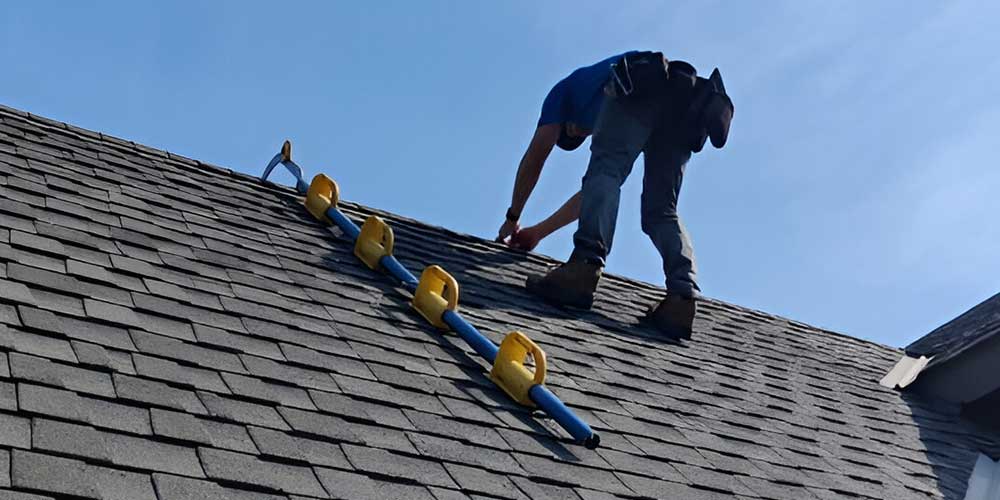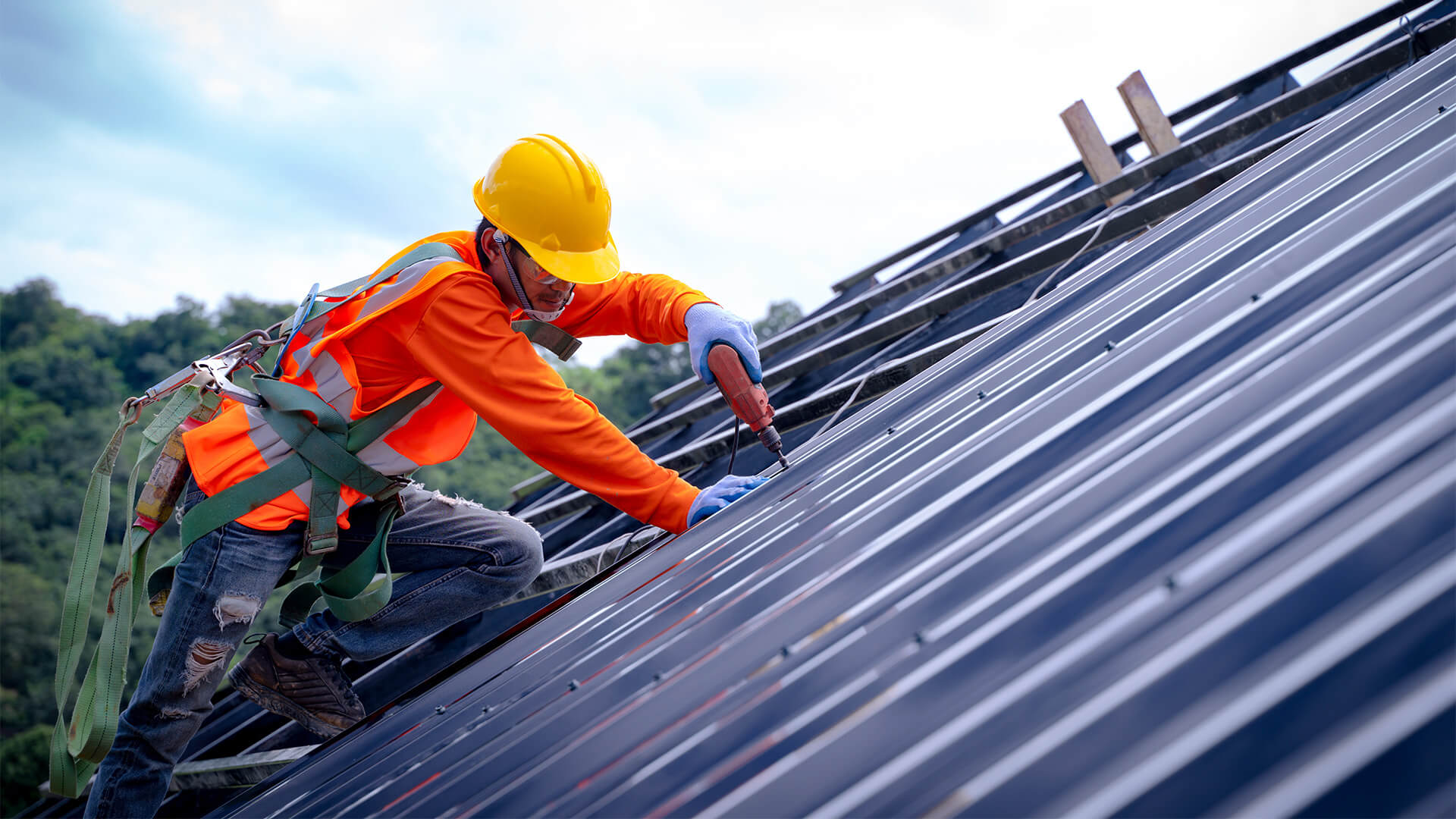Understanding the Various Sorts Of Roofs: A Comprehensive Overview for Homeowners
With a range of choices-- ranging from the standard gable to the contemporary flat-- each type presents special benefits and obstacles that ought to straighten with the home owner's details demands and environmental considerations. As we discover the complexities of various roofing system types, it becomes apparent that one dimension does not fit all; the appropriate selection may surprise you.
Gable Roofing Systems
Gable roofs, identified by their triangular shape, are amongst the most popular roof styles due to their simpleness and effectiveness in shedding water and snow. This style includes 2 sloping sides that meet at a ridge, allowing for reliable drainage and decreasing the threat of water buildup. The steep pitch commonly linked with gable roofs improves their ability to manage hefty rainfall, making them appropriate for various environments.
In addition to their functional advantages, saddleback roofs provide aesthetic versatility. They can be adjusted to numerous building designs, from standard to contemporary homes. The design can also accommodate added functions such as dormer home windows, which boost all-natural light and ventilation in the attic space.
Furthermore, gable roofing systems give enough space for insulation, adding to power effectiveness. Home owners can select from a selection of roof products, including asphalt shingles, metal, and floor tiles, even more boosting personalization alternatives.
Regardless of their benefits, saddleback roofs might need added support in locations prone to high winds or heavy snowfall. On the whole, the gable roof remains a favored choice due to its mix of performance, durability, and visual allure.
Flat Roofs
Flat roofs are typically acknowledged for their minimal design and functional applications, specifically in industrial and industrial setups (oahu roofing). These roofs feature a horizontal or virtually horizontal surface area, which enables easy building and versatile room use. While they might do not have the aesthetic allure of pitched roofings, flat roofing systems provide countless benefits, particularly in city atmospheres where taking full advantage of room is vital
Among the key benefits of flat roofing systems is their ease of access. House owners can use the roofing room for various objectives, such as rooftop yards, balconies, or photovoltaic panel setups. Furthermore, level roofs are typically much more economical to keep and set up contrasted to their sloped equivalents, as they require less products and labor.
Common products used for flat roofings include built-up roof covering (BUR), customized asphalt, and single-ply membrane layers, each offering unique advantages. Overall, level roofing systems offer as a functional and adaptable selection for lots of house owners and organizations alike.
Hip Roofing Systems
Hip roofing systems are defined by their sloped sides that converge at the top, creating a ridge. This design is distinctive from saddleback roofs, as all four sides of a hip roof covering slope downwards toward the wall surfaces, giving a much more secure framework. The angle of the slopes can differ, permitting flexibility in architectural aesthetic appeals and performance.
One of the primary advantages of hip roofings is their ability to stand up to heavy winds and unfavorable climate condition. The sloped surfaces enable much better water drainage, lowering the risk of leaks and water damage. Additionally, hip roof coverings offer enhanced attic room area, which can helpful hints be utilized for storage space or perhaps exchanged comfortable locations.
However, creating a hip roofing system can be extra intricate and expensive than easier roof covering kinds, such as saddleback roofs. The added material and labor associated with producing the inclines and making certain proper structural honesty can cause higher expenditures. Despite these disadvantages, several house owners favor hip roofings for their resilience, visual allure, and capacity for energy effectiveness.
Mansard Roofing Systems
Mansard roofs, usually acknowledged by their distinct four-sided design, function 2 inclines on each side, with the reduced slope being steeper than the top. This architectural design, stemming from France in the 17th century, is not only aesthetically attractive yet useful, as it makes the most of the useful space in the upper floors of a building. The steep reduced slope permits even more clearance, making it an excellent choice for attic rooms or lofts, which can be exchanged living spaces.
Mansard roofs are defined by their versatility, accommodating various building designs, from standard to modern-day. They can be created with different materials, including asphalt shingles, slate, or metal, offering house owners with a variety of alternatives to suit their preferences and budgets. In addition, the design permits the assimilation of dormer windows, improving all-natural light and ventilation in the top levels.
However, it is necessary to take into consideration the possible disadvantages. Mansard roof coverings might require even more maintenance due to the intricacy of their style, and their steep inclines can be testing for snow and rain runoff. Generally, mansard roofs combine style with functionality, making them a preferred selection amongst homeowners seeking distinct building features.
Shed Roofings
As homeowners progressively seek simpleness and capability in their architectural styles, lost roof coverings have become a popular option. Identified by a single sloping aircraft, a shed roof presents a minimal aesthetic that enhances different home styles, from contemporary to rustic.
Among the main benefits of a shed roofing system is its straightforward construction, which typically equates to lower labor and material expenses. This layout enables for efficient water drainage, minimizing the threat of leaks and water damage. Furthermore, the upright slope supplies adequate space for skylights, boosting natural light within the inside.
Lost roofs likewise provide versatility in terms of usage. They can be efficiently incorporated right into additions, garages, or outside frameworks like pavilions his response and sheds. Moreover, this roof design can suit different roof materials, consisting of steel, asphalt roof continue reading this shingles, or perhaps green roofs, aligning with environment-friendly campaigns.
However, it is crucial to take into consideration local environment conditions, as heavy snow loads may demand modifications to the roofing system's angle or structure. Generally, dropped roofing systems offer a functional and cosmetically pleasing option for home owners seeking to maximize performance without jeopardizing style.
Final Thought


Gable roofs, identified by their triangular shape, are among the most prominent roof covering styles due to their simpleness and performance in losing water and snow. oahu roofing. The high pitch generally linked with gable roofing systems boosts their capacity to take care of hefty rainfall, making them ideal for different environments
While they may lack the visual appeal of pitched roof coverings, flat roofing systems provide various advantages, specifically in urban settings where maximizing space is critical.
